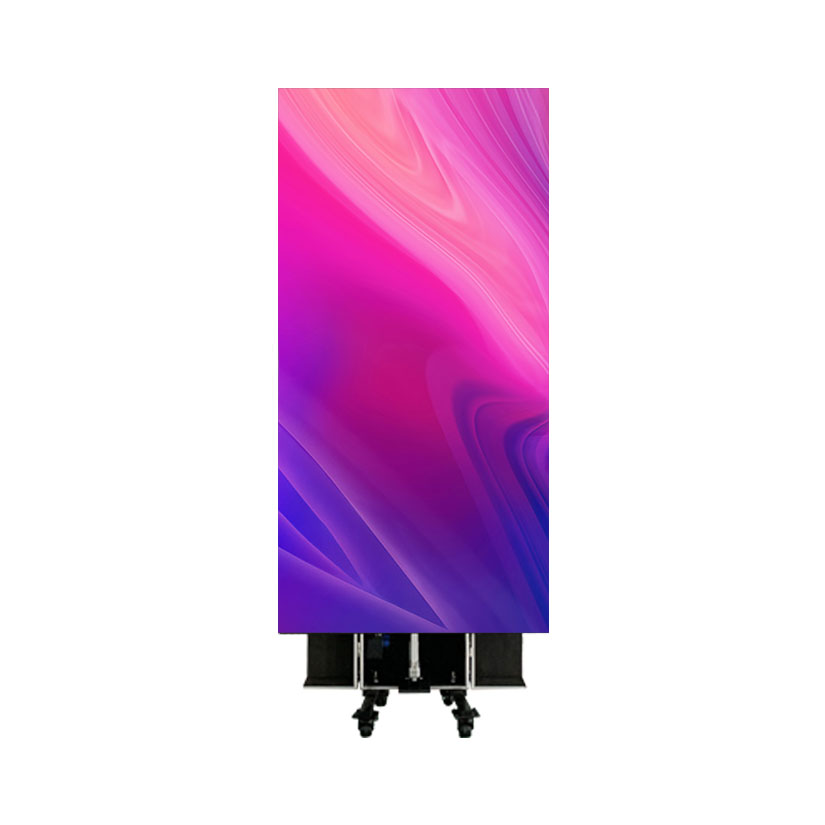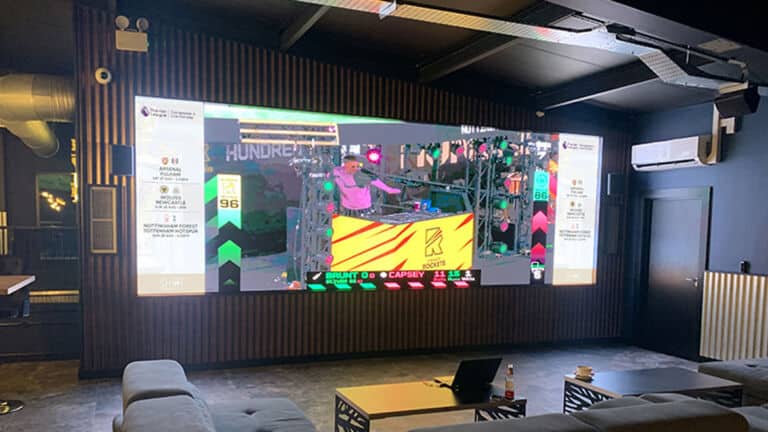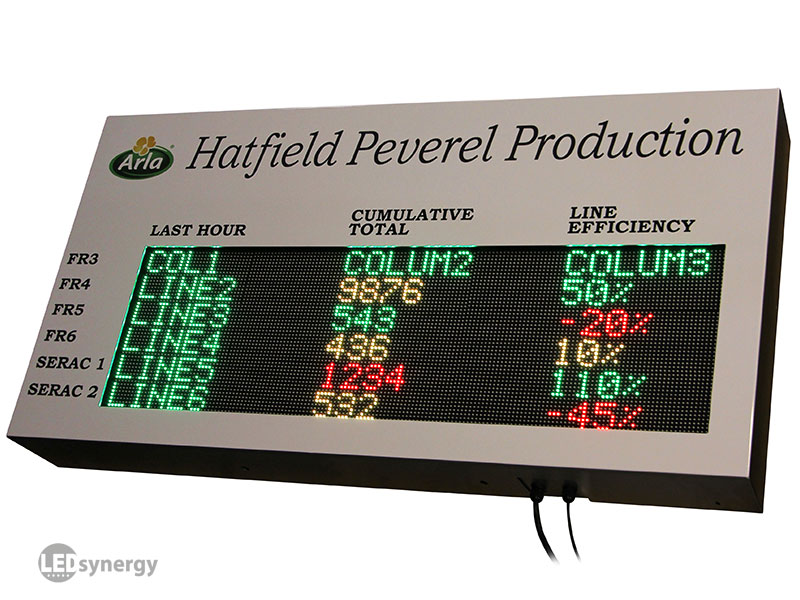Excellent Advice For Choosing Quality Rental Led Display
Wiki Article
What Is The Significance Of Pixel Pitch And Resolution When Choosing Led Displays?
When looking into LED displays, the resolution and pixel pitch are two important aspects to be considered. These two aspects directly affect the clarity of detail and the overall visual impression provided by LED displays. These two components are vital due to a variety of reasons.
1. Image Quality
Pixel Pitch Pixel pitch is measured as the distance between one LED pixel's center and the center the next. A lower pixel pitch means that the LEDs will be more together. This means greater pixel density and better resolution. This translates directly to crisper and more detailed images and is particularly crucial when it comes to content that contains intricate details or text.
Resolution: Resolution refers to the amount of pixels on the display. It's typically expressed in terms of width x height, e.g. 1920x1080. The greater the resolution, the more clear the display will be. It also creates a more immersive environment. This is particularly important when viewing large screens.
2. Viewing Distance
The ideal viewing distance is closely linked to the pixel pitch. To avoid pixelation displays that are seen closely, like those in exhibitions, retail or in indoor displays, require a lower pixel pitch (and higher resolution). For billboards on outdoor locations as well as large-scale displays viewed at a distance, it is possible to use a higher resolution may suffice because the pixels won't be visible.
3. Content Versatility
Displays with higher resolutions as well as smaller pixels are able to display different types of content. From HD high-definition videos to tiny graphics and intricate text they're capable of handling a broad variety of formats. This flexibility is essential in applications that require fluid content. Examples include digital signage, studios for broadcasting and control rooms.
4. Costs
While a smaller size can provide superior quality images, it increases the cost of the display. Screens with higher resolution are more expensive to produce because of the higher amount of LEDs that are required. Take into consideration the use and viewing distance when balancing high resolution with budget.
5. Application Specificity
The significance and importance of the pixel pitch will vary according to the software you're using
Indoor Displays - Often smaller pixel sizes are needed (e.g. between 1.2mm and 2.5mm) in order to keep high resolutions for close-up viewing.
Outdoor Displays - May be larger in pixels (e.g. the pixel pitch of 4mm-10mm) because they are viewed from a larger distance and high resolution may not be needed.
6. The ability to upgrade and the longevity
With the advancement of technology in display the pixel pitch decreases which allows for greater resolutions even in smaller areas. If you buy an LCD today that has an optimal pixel pitch, it will remain efficient and useful for an extended period of time.
Conclusion:
The pixel pitch is an important factor in an LED display’s performance. It impacts image quality, the experience of viewing, as well as the content's versatility. To select the most suitable LED display for your needs budget, size, and audience, you should carefully take into account all these aspects. View the top rated creative led displays for more info including tv led wall, flexible led display, display screens, rental led display screen, wall tv led, display screens, led wall tv, led transparent display, led display screen, video walls and more.

What Are The Most Important Factors To Consider When Selecting Led Displays For Viewing Angles?
It is crucial to take into account the viewing angle when researching LED displays. This is particularly true when the display may be viewed by different people from different angles. Here are some of the reasons the angle of viewing is important:
1. Uniform Image
Definition The angle of view for LED displays refers to maximum viewing angles at which the display is viewed in a way that provides an acceptable visual performance, usually in terms of the brightness or the color consistency. In most cases, the viewing angle is determined in both the vertical as well as horizontal directions.
Importance: Wider viewing angles guarantee the same image quality regardless of the way a viewer places themselves relative to the their display. It signifies that the brightness or color won't change when viewed above/below, or from the side.
2. Audience Experience
The impact of large venues In large arenas, like arenas and concert halls the audience can be spread over an extensive space. Displays with a narrow viewing angle may result in poor viewing or a poor quality image for those who are seated at sharp angles.
Application: In large-scale events or installations in which the audience is placed within a broad arc, a wider viewing angle is necessary to ensure that everyone get a clear, vibrant picture of the content being displayed.
3. The suitability of public Spaces
Public Displays: The angle of view is vital in locations like shopping centers as well as transportation hubs, and outdoor advertising. People will be looking at the display from all angles. The display's effectiveness in engaging and attracting visitors would be limited by a narrow viewing angle.
Application: To display digital signage that is used in public spaces Wide viewing angles maximizes the display's reach and makes sure that the content is visible and attractive from a variety of perspectives.
4. Content Consistency
Color and brightness uniformity displays with poor viewing angles could show color shifts or decreases when viewing from positions away from the center. This can be a problem for content that is connected to brands, where uniformity and accuracy in color are essential.
Application: Wide viewing angles are useful in settings where consistency of color and brand image are essential, like retail displays or corporate spaces. They make sure that the display looks exactly as it was intended from any angle.
5. Installation Flexibility
Flexibility when installing: A display which has a wide viewing area provides greater flexibility. It permits for creative placement, like wrapping around columns, or placing it in areas where people are approaching from various directions.
Application Displays using LEDs that are artistic or architectural, such as those used for galleries, museums or other experiences that are immersive The wide viewing angles permit an innovative design, without compromising user experience.
6. Renting and staging using the performance
Event Settings - For rentals and in stage settings, where displays are installed in different locations and settings, a broad view angle is essential to ensure that the display will perform consistently in every setting regardless of the location of the audience.
Application: A wide viewing angle is perfect for concerts, events or trade shows where attendees are likely to move around or the display is viewed at different angles. This will ensure that all guests are able to see the information.
7. Impact on ROI
Increasing visibility: A display that has a large viewing angle will attract a wider audience and increase the impact of your display, which can improve the return on investment. This is important, especially for informational displays and advertising screens. The ability to increase visibility is vital to achieve desired outcomes.
Application: When installing commercial displays, it is essential to ensure that the screen can be seen from different angles. This increases the engagement of viewers and the efficiency of the information can be displayed.
Conclusion:
The viewing angle directly affects the display's visibility, reliability and efficiency. It is especially important in environments where the viewers are spread out and the display can be seen from different angles or in situations where consistency of content is crucial. A wide viewing angle is crucial when looking into LED displays to ensure the display will meet your application's needs and provide the best viewing experience to all. Take a look at the best led rental screen for blog tips including display led outdoor, advertising displays, led in the wall, advertising tvs, advertising displays, led transparent display, display light led, outdoor led panel, transparent led screen display, church led wall and more.

What Is The Importance Of Roi Costs, Energy Efficiency And Cost In Led Display Research?
When looking into LED displays, the cost and ROI (Return on Investment) and energy efficiency are important elements. They directly impact the viability of an investment, its long-term benefits and operational expenses. What are the motives behind each of these factors?
1. Initial Cost
Budget considerations: The initial cost of purchasing LED displays is a major aspect of any project. It's not just the price of the display, but also the expenses of installation, mounting structures, and any necessary accessories.
Quality Compare. Price: Displays with lower costs may seem attractive initially, but they might come with trade-offs regarding quality and durability or other features. The initial price of display must be weighed with the performance you want.
In situations where budgets are limited, careful consideration is needed of the performance and cost. For instance, a high-end display could be necessary for crucial applications, such as advertising at prime places. Cheaper options may be sufficient in less demanding settings.
2. Return on Investment
Revenue Generation: The ROI is typically related to the capability of LED displays to generate revenue. This can be through advertisements, customer engagement or brand visibility. A display that delivers captivating content and successfully captures attention can generate a high ROI through advertising or sales.
Longevity and Durability: Displays that are durable and last longer typically have a higher ROI. They need less maintenance in the future and have lower maintenance costs. It is possible to cut down on the cost of long-term expenses by investing more initially.
Impact of Features on ROI: Features such as high brightness, wide viewing angles High resolution, and high resolution can increase the cost of initial investment however they can also increase audience engagement, resulting in an increase in ROI.
3. Energy Efficiency
Cost of operation: The capability to lower the cost associated with an LED display is contingent on the energy efficiency of the display. The lower the cost of electricity, the better. This is particularly applicable to large-sized displays or displays which operate 24 hours a day.
Environmental Impact Energy-efficient displays can contribute to sustainability goals, through cutting down on carbon footprint. It is becoming increasingly important for businesses and organizations that have a strong commitment to sustainability or who must adhere to the energy standards.
Long-Term Savings: While energy efficient displays may have a greater initial cost, the savings in electricity costs over the life of the display may be substantial, enhancing the overall ROI.
Application: In regions where electricity costs are high, or for large-scale installations that consume a lot of power, or where the energy consumption is significant, energy efficiency makes a big difference to overall operating costs.
4. Cost of Ownership Total Cost of Ownership
Maintenance and Repairs Maintenance and Repairs ownership includes not only the purchase price at first, but also the expenses related to maintenance, repairs, and potential downtime. TCO tends to be less for displays that are more durable, have longer life durations, and provide greater cost efficiency in the long-run.
Enhancements and Scalability. Consider the ease of scaling or upgrading the display. A modular display that is able to be upgraded or expanded with minimal cost can be the best long-term investment.
Application: In cases where displays are scheduled to operate for long durations of time (such for public areas and corporate settings, or in high-traffic retail spaces), a TCO-based approach ensures the investment remains cost-effective over time.
The Financing Options
Flexible financing: A lot of providers offer leasing or financing options that aid in managing the initial cost of high-quality displays. This is beneficial to companies who wish to safeguard their cash flow while continuing to invest in digital advertising.
ROI Considerations: Leasing options can also impact ROI, since they let businesses move to more modern technology without a large initial investment, ensuring that the displays remain cutting-edge and effective in terms of generating returns.
6. Market Competitiveness
Cost is versus. ROI and cost of LED displays may impact your competitiveness. A well-designed display will assist you in beating your competitors draw more clients and customers, and offer an increase in return on investment.
Application: In the industries that have high levels of competition, such as retail and entertainment, making sure that your displays are higher quality, yet also provide a better ROI, can give you a competitive edge.
Conclusion:
The value of LED displays and their longevity are determined by factors like cost and ROI, energy efficiency, as well as the ROI. The performance of your display will be improved when you balance initial costs and expected returns on investment. This information is vital in making an informed decision that fits your budget, long-term goals and operational goals. Have a look at the most popular flexible led panels for more advice including wall tv led, display screen led, outdoor led screen display, led light sign board, led wall panels, video wall church, outdoor led monitor, monitor transparent, led light board, video wall tv and more.
